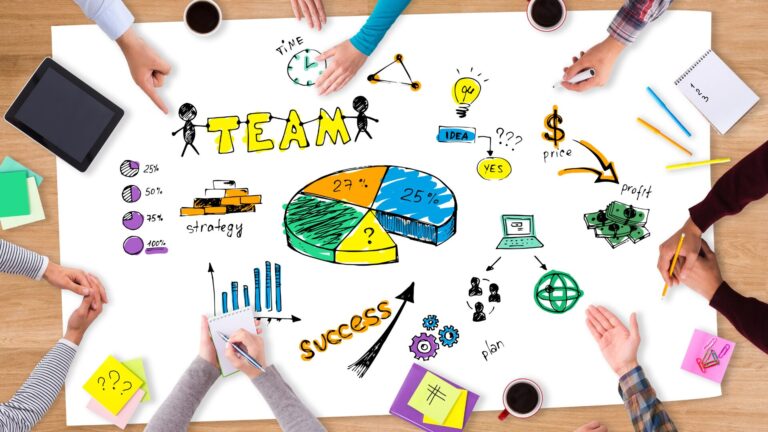Warm Up
—- **FOR NEW STUDENTS**————————————————
- What industry do you work in and what is your role?
- What are your responsibilities in your role/position?
- Can you describe to me the function of your workplace/company?
- How many departments, how many offices. National or International?
- What are the Minimum requirements for employment i.e Education or Experience?
- How many opportunities are there to ‘move up the ladder’?
- What is the process for changing job roles i.e Interview? Test?
——————————————————————————————
General discussion about your workweek:
- Current projects? Deadlines? Opportunities?
- Anything of interest happening?
——————————————————————————————-
Listening
Before the video: Teachers will read the following questions aloud, please prepare for listening!
After the video: Did you get it? If not, please tell your teacher specifically which part you didn’t understand. Let’s review the video again 🙂
- Healthcare providers have begun to recognize what?
- What is the rising trend of remote healthcare coined (called)?
- There is a belief that technology will take over what?
Key Words and Phrases
- Personal technology is paving the way for a new era for healthcare that is changing the way we make medical decisions and how we receive treatment. This video explains the rising trend of remote healthcare and how it has allowed for better administration of treatment for patients at their homes.
- personal technology is ushering in a new era of health care, fundamentally changing how and where medical decisions are made and treatment is rendered
- through a combination of wearable health monitor technologies, telemedicine, home diagnosis and even pop up retail settings healthcare providers have begun to recognize the importance of treating patients remotely.
- In 2014 2.3 billion u.s. dollars was raised for digital health startups and between 2011 and 2014 1.9 billion u.s. dollars in capital was raised for companies aiming to use predictive analytics, by 2018 70% of healthcare organizations are expected to invest in medical mobile apps with an estimated spend of 1.5 trillion US dollars on wearable health monitor technologies and mobile apps
- this rising trend of remote healthcare coined “housecalls plus” has allowed for a more timely administration of treatment for patients at their homes significantly reducing the cost of intervention as well as improving the quality of care. Pilot programs are showing excellent results with one program in the u.s. reducing admission rates to hospitals by 18 percent for its diabetic population who use remote monitoring and communication and their readmission rates have also dropped by 31 percent all of which reduced costs to the test center by 7 percent
- an alternative to hospital run health care programs is the drive towards patients using wearables and other personalized technologies to receive a variety of readings which they can directly compare to a number of benchmarks and decide whether or not to proceed to a health care professional
- other patients may instead choose to consult health social networks to share information from their automated readings, consult a physician during Q&A sessions or even seek emotional support
- patients may also use apps to detect a correlation between their condition and medication interactions or bad health practices to make decisions on how to improve their health for more in-depth testing. Patients could also decide to use home kits or personalized genomic services ,blood and other biomarker testing, environmental testing and even predictive bio simulation such a style of healthcare is being termed “local convenience store” for those who choose to consult a healthcare expert a number of options may arise that redirect the patient’s away from the hospital
- retail outlets in common city centers and clinics in remote locations can receive patients, review their information and decide whether to continue with further care by a physician on-call doctors are also readily available to answer questions and provide health care directives through video chat email or mobile phones to patients anywhere
- telemedicine has grown exponentially with 72% of hospitals and 52% of physician groups in the u.s. currently providing such services and in Ontario Canada telemedicine programs have seen an annual growth of about 30% for the past few years among the risks associated with advancing personalized technology in healthcare is the belief that technology will take over the role of the doctor
- in 2017 142 million medical and health apps are expected to be downloaded and an estimated 65% of consumer health care transactions are to be made using mobile devices nevertheless hospitals and healthcare professionals will still be at the forefront of all treatment plans especially in unique cases, therefore, the new dynamic of doctor-patient relationships requires new collaborations and business models as well as a revised understanding of healthcare companies role in the value chain
—————————————————————————————————————————————————-
- Administer – two meanings; administrator is the manager of something. the second meaning is medical to give or apply (a remedy or drug).
- Usher – guide something or someone
- Rendered – separate the bad parts
- Wearable Health monitor technologies: “wristbands will come equipped with sharper health monitoring features that will enable doctors to better track a patient’s condition and arrive at critical insights from collected data. Apple Watch measuring heart-rate during sleep and helping prevent cardiac arrests have already done the rounds.”
- Telemedicine: Electronic consultations are possible through interactive telemedicine services which provide real-time interactions between patient and provider. Videoconferencing has been used in a wide range of clinical disciplines and settings for various purposes including management, diagnosis, counseling, and monitoring of patients.
- Predictive analytics : uses many techniques from statistics, modeling, machine learning, and artificial intelligence to analyze current data to make predictions about the future.
- Coined – invent (a new word or phrase).
- Intervention – action taken to improve a medical disorder.
- Intervene – take action in something so to prevent or alter a result or course of events.
- Pilot program – A pilot program, also called a feasibility study or experimental trial, is a small-scale, short-term experiment that helps an organization learn how a large-scale project might work in practice
- Benchmark – a standard or point of reference against which things may be compared
- Correlation – a connection between two things. “the high unemployment rate correlates to the higher crime rate”
- Genomic – complete set of genes in a cell or organism.
- Predictive bio simulation – Biosimulation is computer-aided mathematical simulation of biological processes and systems and thus (as a result) is an integral part of systems biology. … The aim of biosimulation is model-based prediction of the behaviour and the dynamics of biological systems e.g. the response of an organ or a single cell towards a chemical.
- Directive – official or authoritative instruction
- Value Chain – A value chain is a set of activities that a firm opera
Discussion
- Do you use any wearable health monitor technologies? Or have any health based apps?
- Have you ever had an electronic Consultation? Yes / No, Would You?
- What are some other examples of telemedicine?
- Example – In Australia, during January 2014, Melbourne tech startup Small World Social collaborated with the Australian Breastfeeding Association to create the first hands-free breastfeeding Google Glass application for new mothers. The application, named Google Glass Breastfeeding app trial, allows mothers to nurse their baby while viewing instructions about common breastfeeding issues (latching on, posture etc.) or call a lactation consultant via a secure Google Hangout. who can view the issue through the mother’s Google Glass camera? The trial was successfully concluded in Melbourne in April 2014, and 100% of participants were breastfeeding confidently.
- Let’s discuss the future of medicine and the administration of medicine and what unique challenges there is in Japan
- i.e Aging Population, Public Healthcare, generational competency in modern technology. ( currently the ageing population would not be well versed in the internet as such will be resistant to modern programs)
01:06 pilot programs are showing excellent
02:47 has grown exponentially with 72% of
03:06 in healthcare is the belief that
03:19 consumer health care transactions are to
03:25 professionals will still be at the
03:41 chain



